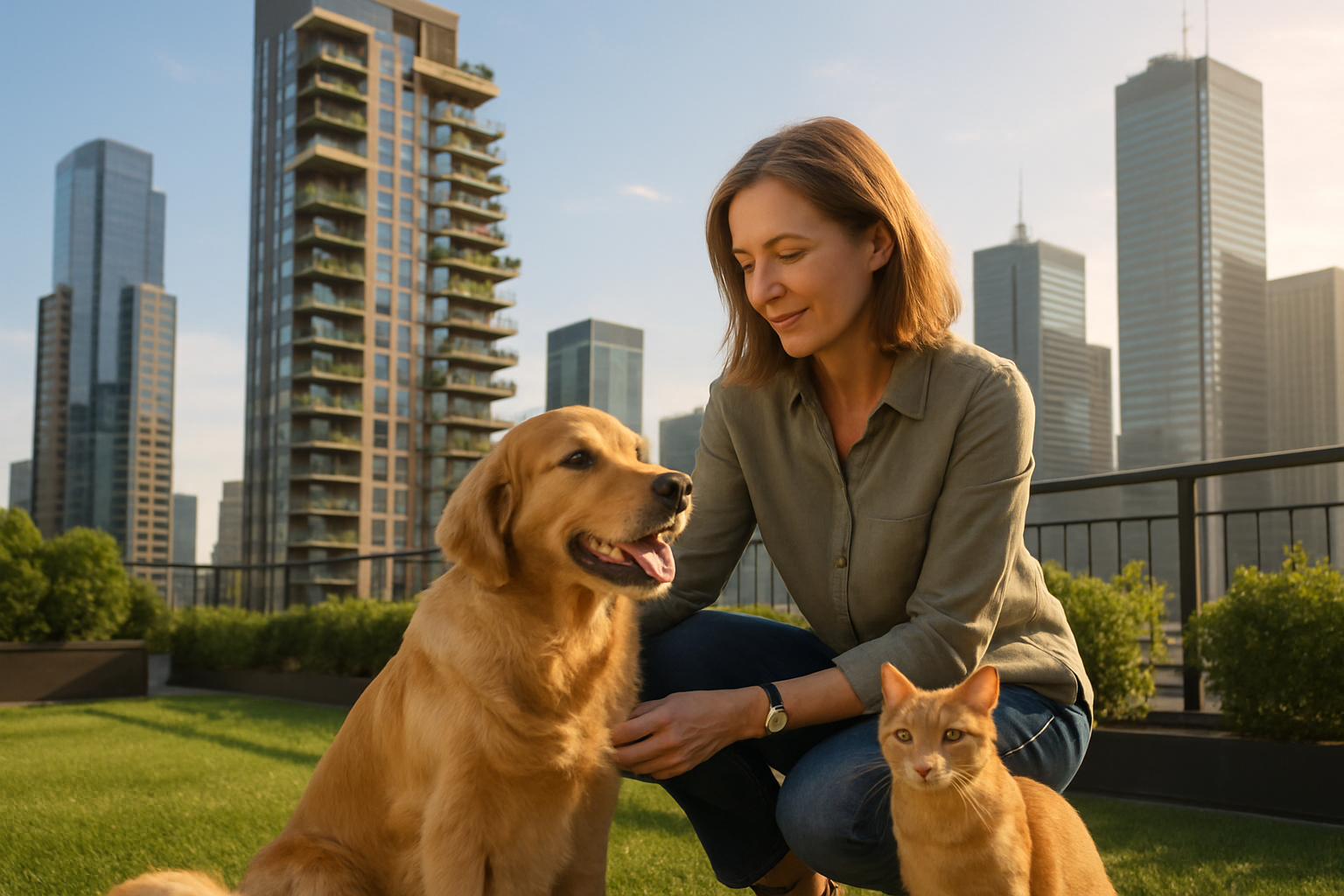The Emerging Trend of Pet-Friendly Skyscrapers
In the ever-evolving landscape of urban real estate, a new trend is taking hold that's capturing the attention of both developers and pet-loving city dwellers. Pet-friendly skyscrapers are becoming increasingly popular, reshaping the way we think about high-rise living and catering to the growing demand for pet-inclusive urban spaces. This innovative approach to vertical living is not just changing the skyline—it's transforming the very fabric of urban communities.

The Rise of Pet Ownership in Urban Areas
The increasing prevalence of pet ownership in cities has been a driving force behind the development of pet-friendly skyscrapers. With more urban dwellers choosing to adopt pets, there’s a growing demand for living spaces that can accommodate the needs of both humans and animals. This shift in demographics has not gone unnoticed by real estate developers and investors, who are now recognizing the potential of catering to this expanding market segment.
Recent studies have shown that pet ownership in urban areas has grown significantly over the past decade, with millennials and Gen Z leading the charge. This trend has been further accelerated by the COVID-19 pandemic, which saw a surge in pet adoptions as people sought companionship during lockdowns. As a result, the real estate market has had to adapt to meet the changing needs and preferences of urban pet owners.
Designing for Pets: Key Features of Pet-Friendly Skyscrapers
Pet-friendly skyscrapers are characterized by a range of features and amenities specifically designed to enhance the lives of pets and their owners. These buildings often include:
Rooftop dog parks: These elevated green spaces provide a safe and convenient area for dogs to exercise and socialize, offering breathtaking city views while pets play.
Pet-washing stations: Fully equipped grooming areas allow residents to keep their pets clean without the hassle of transforming their own bathrooms into makeshift grooming salons.
Pet-specific elevators: Some buildings feature dedicated pet elevators to minimize potential conflicts between pet owners and residents who may have allergies or phobias.
On-site veterinary services: Cutting-edge pet-friendly skyscrapers may include veterinary clinics or partner with local vets to provide convenient healthcare for resident pets.
Indoor play areas: For times when outdoor activities aren’t feasible, these spaces offer a climate-controlled environment for pets to stay active and engaged.
The Economic Impact of Pet-Friendly High-Rises
The integration of pet-friendly features in skyscrapers isn’t just a matter of convenience for pet owners—it’s also proving to be a smart economic move for developers and property managers. Buildings that cater to pet owners often see higher occupancy rates and can command premium rents compared to their non-pet-friendly counterparts.
Investors are taking notice of this trend, with many seeing pet-friendly high-rises as a lucrative opportunity in the real estate market. The additional costs associated with designing and maintaining pet-friendly features are often offset by the increased demand and higher rental or sale prices these properties can achieve.
Moreover, the pet industry itself is booming, with pet-related businesses such as grooming services, pet supply stores, and veterinary clinics seeking to establish themselves in or near these pet-centric buildings. This creates additional revenue streams for property owners through commercial leasing opportunities.
Challenges and Considerations
While the concept of pet-friendly skyscrapers is gaining traction, it’s not without its challenges. Developers and property managers must navigate a complex set of considerations to ensure the success of these projects:
Noise control: Implementing effective soundproofing measures to minimize disturbances from barking or other pet-related noises.
Waste management: Developing efficient systems for pet waste disposal and maintaining cleanliness in common areas.
Allergy concerns: Balancing the needs of pet owners with those of residents who may have allergies or other health concerns related to animals.
Insurance and liability: Addressing potential increases in insurance costs and liability issues associated with having pets in high-rise buildings.
Breed and size restrictions: Determining appropriate policies regarding pet breeds and sizes that can be safely accommodated in a vertical living environment.
The Future of Urban Living: Integrating Pets into City Skylines
As cities continue to grow vertically, the integration of pet-friendly features in skyscrapers represents a significant shift in urban planning and development. This trend reflects a broader movement towards creating more inclusive, diverse, and livable urban environments that cater to the varied needs and lifestyles of city dwellers.
Looking ahead, we can expect to see further innovations in the design and amenities of pet-friendly skyscrapers. From advanced air filtration systems to combat pet-related allergens to the incorporation of smart technology for pet monitoring and care, the possibilities for enhancing the pet-friendly high-rise experience are vast.
Moreover, the success of these developments may influence city planners and policymakers to consider pet-friendly infrastructure on a broader scale, potentially leading to more pet-inclusive urban spaces beyond individual buildings.
As the real estate market continues to evolve, pet-friendly skyscrapers stand as a testament to the industry’s ability to adapt to changing societal needs and preferences. By recognizing and embracing the importance of pets in people’s lives, these innovative structures are not just changing where we live—they’re redefining what it means to call a city home.





